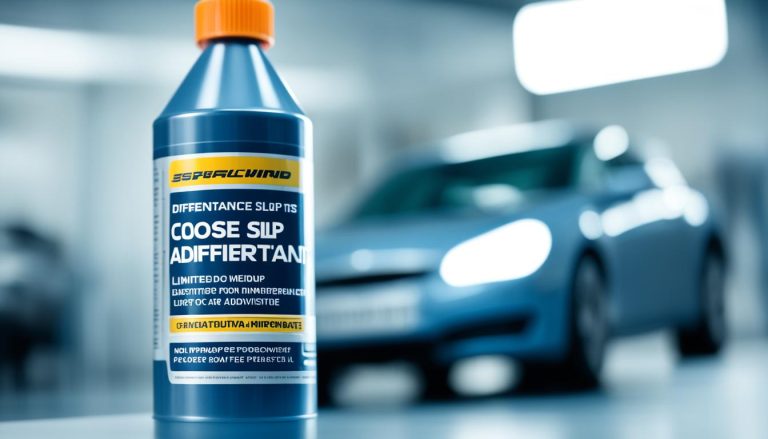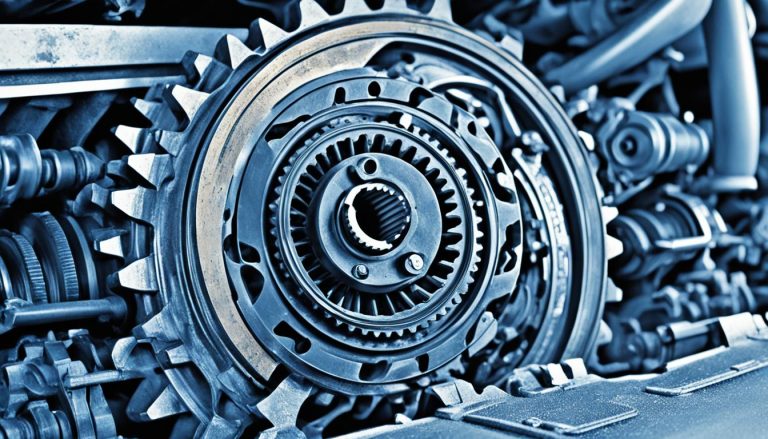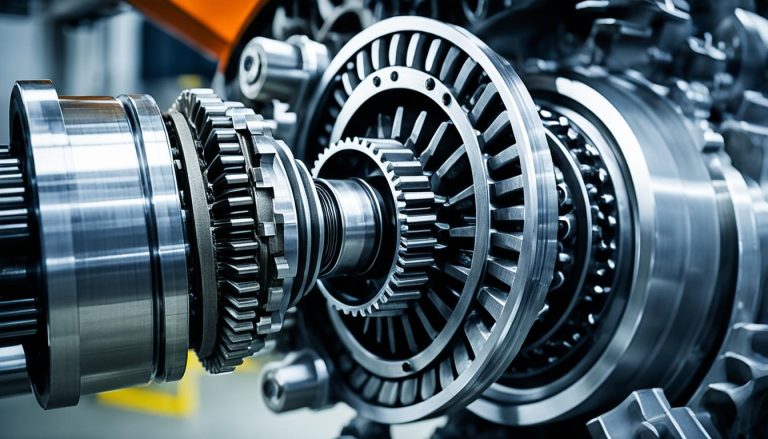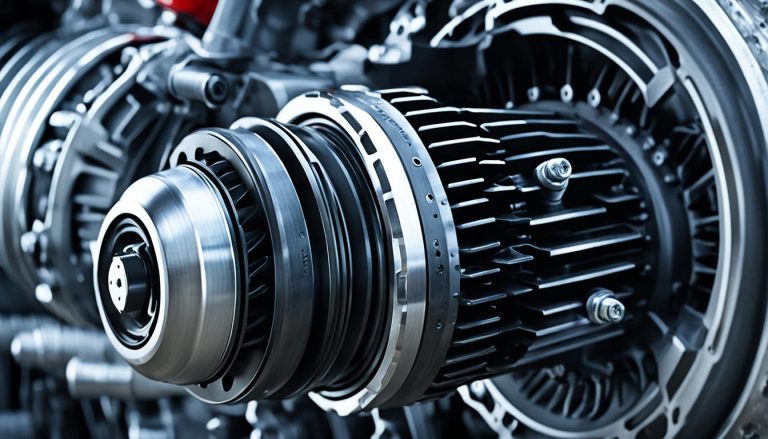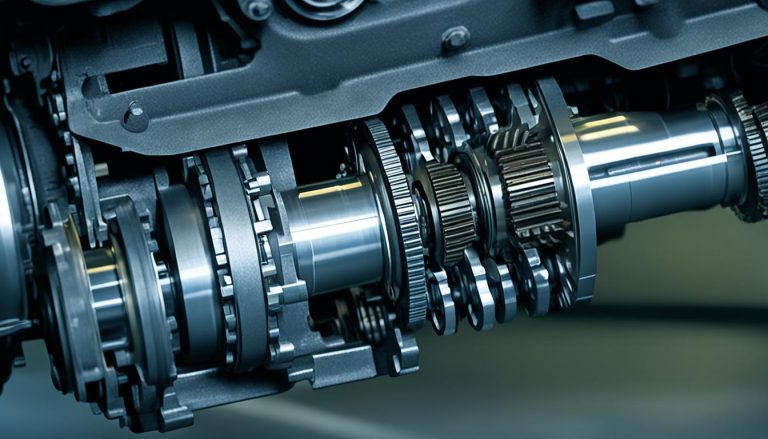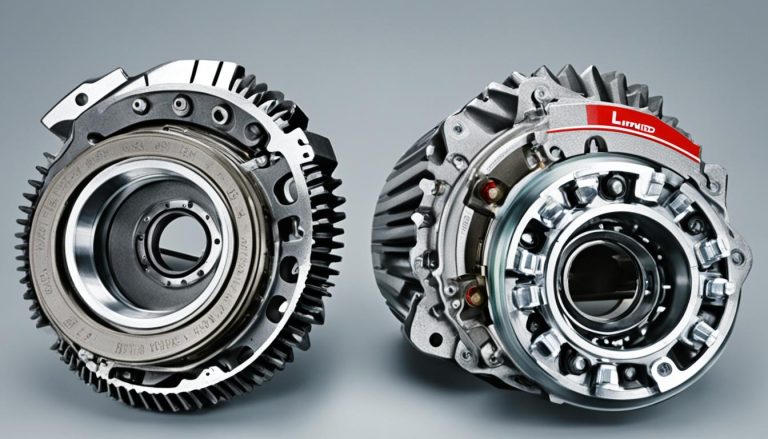Understanding a Limited Slip Rear Axle Explained
When you’re taking on the sharp turns of a race track or navigating tricky terrain, the technology beneath your vehicle is what sets the winners apart from the rest. Specifically, it’s your car’s limited slip rear axle, also known as a limited slip differential (LSD), that’s working hard to keep you in control. Originally birthed from the high-stakes world of Grand Prix racing, this mechanism is engineered to counteract wheel spin by redistributing power to the wheel with the most traction. This not only boosts your performance but gives you that extra edge when it counts the most.
Whether you are a die-hard performance enthusiast or someone looking to gain better traction in varying driving conditions, understanding your rear axle with limited slip can dramatically change your driving experience. Let’s dive into what makes the limited slip differential a celebrated piece of automotive innovation.
Key Takeaways
- Limited slip rear axle: Essential for improved control and performance, particularly in high-speed cornering and off-road conditions.
- LSD technology: Originated in Grand Prix racing to mitigate wheel spin under high torque situations.
- Enhanced traction: LSDs intelligently adjust power distribution to the wheel with the most grip, optimizing your vehicle’s capabilities.
- Performance edge: A must-have for those who enthusiastically push their vehicles to the limits on tracks or rugged landscapes.
- Power redistribution: Limits the speed difference between driven wheels for smoother handling and stability.
- History and heritage: The LSD’s development was crucial in elevating the driving experience since its inception in the automotive world.
The Fundamentals of Differentials and Traction Control
When you’re behind the wheel, vehicle dynamics are critical to the quality of your driving experience. Understanding what is a limited slip rear axle and its role can transform how you handle the twists and turns of the road. Let’s dive into the mechanics that enhance your traction and control.
The Role of Differentials in Vehicle Dynamics
Differentials are the unsung heroes in the symphony of vehicle dynamics, ensuring that your turns are smooth and efficient by allowing each wheel to rotate at different speeds. This harmony between wheels is essential, particularly during cornering, when the inside wheel needs to turn slower than the outside wheel to maintain traction and momentum.
Comparing Open and Limited Slip Differentials
Let’s compare the traditional open differential with its more sophisticated cousin, the limited slip differential (LSD). An open differential does a decent job most days but falls short in low-friction conditions – think of a car stuck because one wheel is on ice. The limited slip rear axle addresses this by redistributing torque to the wheel with more grip, minimizing loss of control and improving traction — a clear demonstration of the performance benefits of LSD.
| Feature | Open Differential | Limited Slip Differential |
|---|---|---|
| Power Distribution | Equal to both wheels, regardless of traction | Varies based on traction, favoring the wheel with more grip |
| Performance on Low-Grip Surfaces | Poor, as power goes to the wheel with less resistance | Improved, maintains drive on both wheels |
| Handling | Adequate on dry surfaces | Enhanced, particularly in wet or unstable conditions |
| Traction Control | May struggle without external traction control systems | Inherently better at maintaining traction, reducing the need for additional systems |
While traction control systems can aid an open differential in keeping a car steady, the limited slip rear axle is inherently more adept at managing tricky situations. Your car’s ability to adapt on-the-fly to changing roads can be the difference between a close call and a comfortable cruise.
Introducing the Limited Slip Rear Axle
If you’ve ever wondered “how does a limited slip rear axle work?”, you’re in the right place to have the limited slip axle explained in layman’s terms. Picture this: you’re driving through a sharp turn or a slick patch of road and your vehicle maintains poise without the unnerving wheel spin that you’d typically expect. This boost in traction and stability is all thanks to the mechanical marvel known as the limited slip differential (LSD).
Dating back to its initial use in Grand Prix racing, the LSD was a game changer for automobiles, directly addressing the issues of power loss and unsteady handling in high-speed situations. Unlike open differentials that fall short during asymmetric traction conditions, LSD-equipped vehicles are able to redistribute torque to the wheel with more grip, maximizing contact with the pavement.
Consider an LSD as a dynamic scale, constantly balancing the power between two sides to keep your ride steady and strong, especially when it matters most.
But don’t just take our word for it—here’s a real-world comparison to help you truly understand the mechanisms at play:
| Terrain Type | Open Differential Behavior | Limited Slip Differential Behavior |
|---|---|---|
| Wet or Icy Roads | One wheel spins, loss of traction | Both wheels engage, improved grip |
| Loose Gravel or Dirt | Potential for vehicle to get stuck | Gains traction by shifting torque |
| Sharp Turns at Speed | Inside wheel spins freely, reducing control | Torque shifts to outside wheel, enhancing stability |
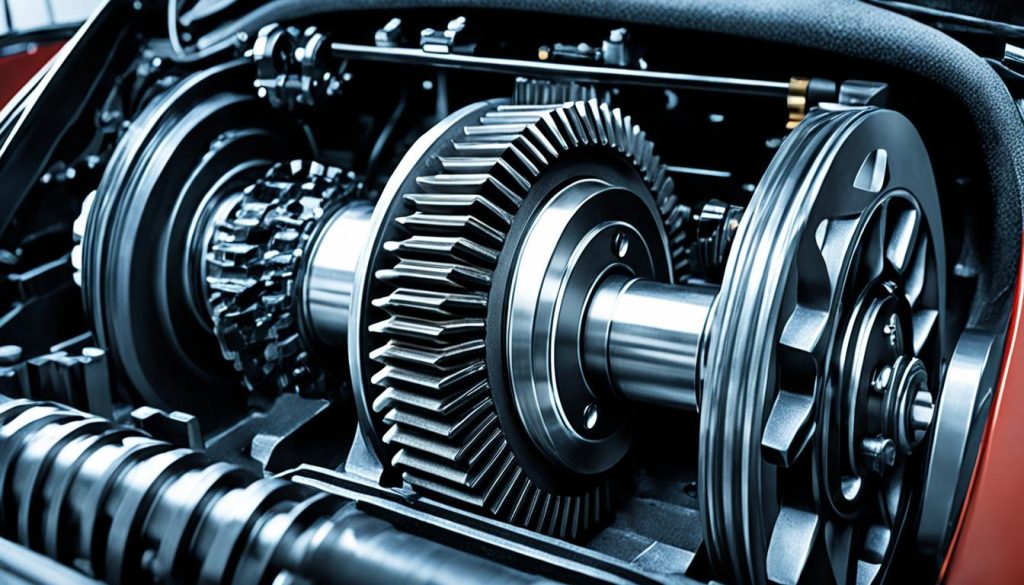
What you see above represents the balancing act performed by a limited slip rear axle, reliably distributing the engine’s power when conditions try to throw your vehicle off its game. With an array of designs and applications, from clutch-based to gear-driven systems, LSD technology has only improved over the years, offering a robust solution for anyone seeking enhanced vehicle performance.
- Gives you the edge in maintaining control during aggressive driving maneuvers
- Prevents power loss and reduces tire wear, saving you time and money
- Contributes to a safer driving experience by managing unexpected road challenges
Understanding your vehicle’s differential setup empowers you to tap into a more engaging and secure drive. Whether you’re navigating the twists and turns of a mountain pass or merely handling the unpredictable nature of daily commuting, a limited slip rear axle is an asset worth considering for any serious driver.
How the Limited Slip Differential Enhances Performance
When you’re deep into performance driving, the battle for effective traction is relentless. It’s here that the difference between a limited slip rear axle vs open differential becomes starkly evident. The merits of upgrading to an LSD are about more than just enhancing your vehicle’s grip on the road; they represent a fundamental shift in how you can expect your vehicle to handle in demanding situations.
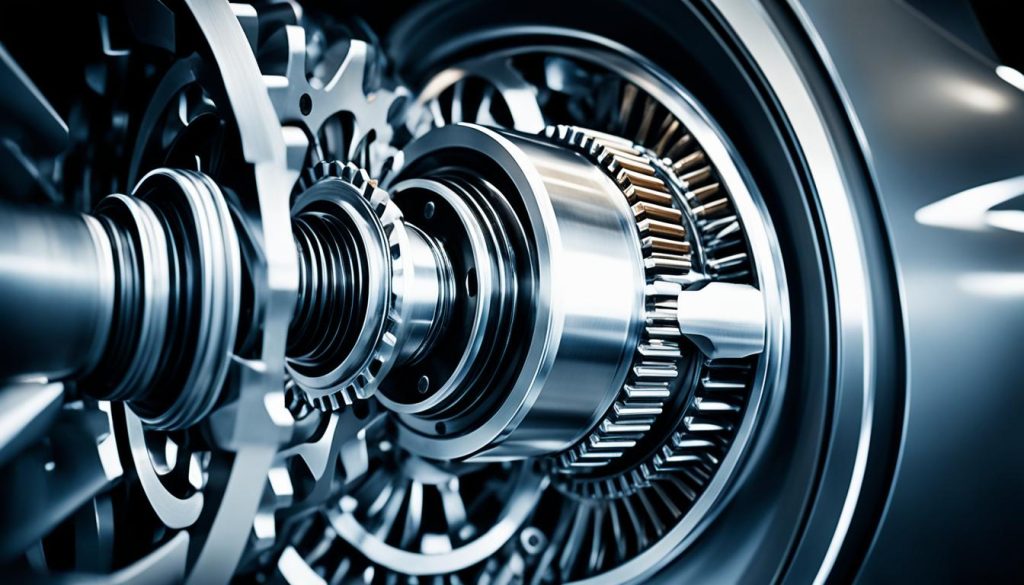
Improved Traction on Diverse Terrains
Imagine you’re navigating through a treacherous trail, with every patch of ground promising a new challenge. The amalgamation of technology in a limited slip rear axle ensures that your vehicle responds with the right amount of power where it’s needed most. Unlike an open differential that might succumb to wheel spin when one tire loses grip, the LSD is designed to distribute torque to the wheel with the most resistance. This ability significantly increases your chances of maintaining momentum across mud, ice, or sand.
Enhanced Handling and Stability in Corners
As you take on corners with gusto, a limited slip rear axle is your silent copilot, working diligently to keep your car stable and responsive. By counteracting excessive body roll and minimizing oversteer or understeer, an LSD allows for sharper turns at higher speeds. This precision control revolutionizes your driving experience, making each corner feel less like a hurdle and more like an invitation to showcase the power and agility of your vehicle.
The harmony of these advantages is what makes a limited slip differential not just a component, but a catalyst for elevating performance driving to its pinnacle.
What is a limited slip rear axle
When it comes to enhancing your driving experience, the advantages of a limited slip rear axle can’t be overstated. Commonly known as a limited slip differential (LSD), this integral part of your vehicle plays a crucial role in improving traction and handling, especially under challenging conditions.
Imagine you’re accelerating through a curve or navigating a slick, uneven surface. Without an LSD, standard differentials might direct power to the wheel with less resistance, causing wheel spin and a loss of control. However, the limited slip rear axle intervenes, distributing power more equally to both wheels, thus aiding in maintaining grip and stability.
Understanding how a limited slip rear axle benefits your vehicle can be the key to unlocking superior handling and an enhanced driving experience.
The Mechanism of Action Behind Limited Slip Axles
So how does it work? The interior of a limited slip rear axle is quite the feat of engineering. It consists of a series of clutches or gears that work together to limit the rotational speed differences between the two wheels it connects. When one wheel starts to lose traction, the mechanism redirects torque to the wheel with more grip, effectively balancing the power output.
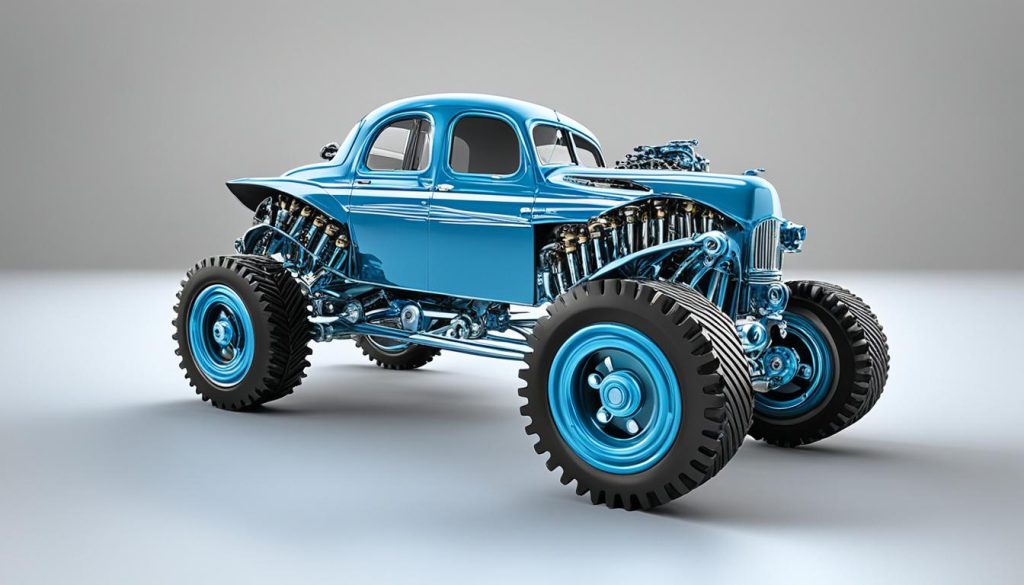
This smart redistribution of power translates directly into better acceleration and stability during cornering. So next time you take a tight turn with confidence, remember it’s your limited slip rear axle ensuring you stay grounded.
The Evolution of Limited Slip Rear Axle Technology
LSD technology has evolved significantly over time. Initially, it started with clutch packs that allowed for some slip in the rear axles. As automotive technology advanced, so did LSDs, branching into several types:
- Viscous
- Mechanical
- Hydraulic
- Electronic
Each iteration of LSD technology brought with it nuanced benefits, from the smooth operation of viscous differentials to the precision control of their electronic counterparts. This progression has continued to enhance the performance characteristics of vehicles equipped with these systems. So, whether you’re driving through snow or tearing up the asphalt, the limited slip differential benefits are working hard beneath you to ensure you have the traction and control you need, exactly when you need it.
Advantages of a Limited Slip Rear Axle in High-Power Vehicles
If you’re a fan of muscle cars or high-performance driving, you’ve likely heard of the limited slip differential (LSD). This neat piece of automotive technology is the secret sauce that gives high-power vehicles an edge in traction and stability. Let’s dive into why a limited slip differential is a quintessential feature for enhancing your driving experience, particularly in powerful rear-wheel-drive beasts.
High-torque scenarios, like those experienced in American muscle cars, often result in a common issue known as “one wheel peel.” This situation occurs when one wheel loses traction and spins freely, wasting power and reducing acceleration. The introduction of LSD technology was a game-changer, addressing this problem head-on. By enhancing traction, the limited slip differential ensures that both wheels are engaged, providing a smoother and more controlled delivery of power to the pavement.

But it’s not just about straight-line speed. Cornering in high-power vehicles is where the limited slip differential truly shines. As you navigate a turn, the LSD allows for slight differences in wheel rotation, adapting to the natural path each wheel takes around the curve. This results in superior grip and stability, reducing the likelihood of fishtailing or losing control. It’s a kind of traction enhancement that can instill confidence even in the most challenging driving conditions.
- Better power transfer: A balanced distribution of torque to both rear wheels, maximizing acceleration and reducing tire slip.
- Enhanced cornering: Allows for variable wheel speeds while turning, ensuring grip and stability through the apex and beyond.
- Controlled performance: Power is not wasted, which can be crucial in competitive racing or spirited street driving.
In summary, whether you’re cutting laps at your local track or simply enjoying the raw power of your vehicle on the open road, a limited slip differential offers the kind of performance enhancement that can make a substantial difference. It’s the bridge between power and poise, ensuring that you, the driver, have the control you desire right at your fingertips—or should we say, right under your pedal foot?
Choosing the Right Limited Slip Differential for Your Vehicle
When you aim to elevate your vehicle’s performance, selecting an appropriate limited slip rear axle is a crucial decision that warrants careful consideration. Diving into the world of performance differentials opens a path to refined handling and spirited driving. The diverse terrain of options—ranging from clutch-type units to sophisticated electronic models—ensures there’s a suitable LSD for every driving ambition.
Types of Limited Slip Differentials: From Clutch to Electronic
The variety of limited slip differentials (LSDs) on the market means that understanding their individual characteristics is vital. A clutch-type LSD excels in delivering a reliable, mechanical solution known for its durability and consistent power transfer. On the other end of the spectrum, the electronic LSD offers unparalleled precision in torque distribution, catering to drivers who demand the utmost control. Each system, be it viscous or gear-driven, has been refined to meet particular performance criteria, enabling you to tailor your ride to your driving style and performance needs.
Applications and Considerations for Installing an LSD
Installing a limited slip differential isn’t merely about boosting performance; it’s a strategic move to match your vehicle’s capabilities to your driving requirements. Whether you’re tearing up the track, navigating rocky trails, or simply enhancing your daily commute, the LSD you choose must align with your vehicle’s specifications and intended use. Consider the demands of your typical driving environments, compatibility with your vehicle’s make and model, and overarching performance goals. When you decide to upgrade to a performance differential, you’re not just tweaking a component; you’re transforming the very nature of your driving experience.
FAQ
What is a limited slip differential (LSD)?
A limited slip differential, often abbreviated as LSD, is a type of automotive differential that limits the amount of spin between two wheels connected to the same axle. It allows for varying rotational speeds of individual wheels, yet can redistribute torque to the wheel with the most traction when slippage is detected. This is particularly useful in high-performance or slippery conditions to maintain control and improve traction.
How do differentials contribute to vehicle dynamics?
Differentials play a vital role in the handling and stability of a vehicle by allowing the wheels to rotate at different speeds, particularly when turning. Without a differential, the wheels would be locked together, forcing them to spin at the same rate, which could lead to difficulty in steering and excessive tire wear. Differentials, especially limited slip differentials, improve traction and control, contributing to overall vehicle dynamics.
What’s the difference between an open differential and a limited slip differential?
An open differential allows wheels to rotate at different speeds, which is necessary when a vehicle turns. However, it sends power to the path of least resistance, often to a wheel with less traction, which can be inefficient. A limited slip differential, on the other hand, can detect when a wheel is losing traction and redirect torque to the wheel or wheels with more grip, thus offering better performance in scenarios where traction can be compromised, like in slippery or off-road conditions.
How does a limited slip rear axle enhance a vehicle’s performance?
A limited slip rear axle improves a vehicle’s performance by optimizing traction. Under challenging driving conditions—such as wet, icy, or uneven surfaces—it ensures that power distribution is balanced between the wheels, which helps in preventing wheel spin and maintaining control. In performance driving situations, such as on a racetrack, it allows for more stable and controlled cornering, ultimately leading to faster lap times.
What are the benefits of upgrading to a limited slip differential in a high-power vehicle?
High-power vehicles can greatly benefit from a limited slip differential as it helps control the power delivery to the ground, maximizing traction and minimizing wheel slip. This is essential for optimizing acceleration and cornering ability, especially in rear-wheel-drive vehicles where power output can easily lead to loss of traction in one of the drive wheels. The LSD helps by distributing torque evenly, maintaining balance, and enhancing performance on various terrains and driving conditions.
Can you explain how a limited slip differential works?
A limited slip differential works by sensing the difference in speed between two connected wheels. When one wheel starts to lose traction and spin faster than the other, the LSD mechanism—be it through clutches, gears, viscous fluids, or electronics—will reduce the speed difference by distributing more torque to the wheel with better traction. This helps maintain control and propel the vehicle forward more effectively.
What are the different types of limited slip differentials?
There are several types of limited slip differentials, including mechanical (gear or clutch-based), viscous (using a fluid), and electronic (using sensors and actuators). Mechanical LSDs typically use gears or a series of clutches to manage torque distribution between wheels. Viscous LSDs rely on a thick fluid that solidifies under stress to couple the wheels. Electronic LSDs are more precise, using electronic sensors and actuators to control torque distribution actively and sometimes integrate with other vehicle systems for enhanced dynamic performance.
What should I consider when choosing an LSD for my vehicle?
When selecting an LSD for your vehicle, consider your driving needs, the type of vehicle, and the conditions you typically encounter. For instance, if you’re into performance driving or track days, a mechanical LSD might be favored for its durability and consistent behavior. If you drive in various road conditions or want smoother operation, a viscous LSD could be preferable. Lastly, if you seek advanced control and have a newer vehicle that can integrate electronics seamlessly, an electronic LSD might be the best choice. Always consider the compatibility with your vehicle and the installation requirements as well.

